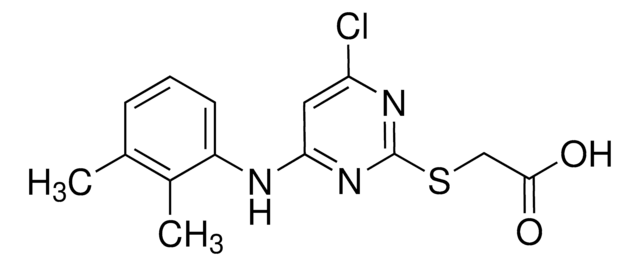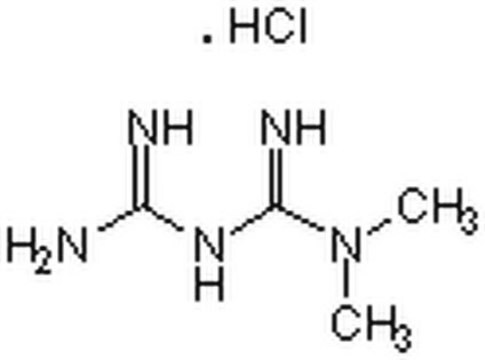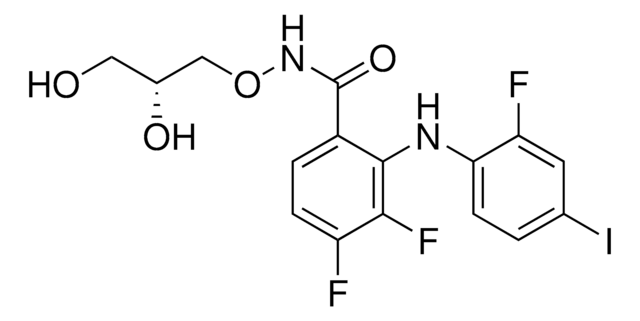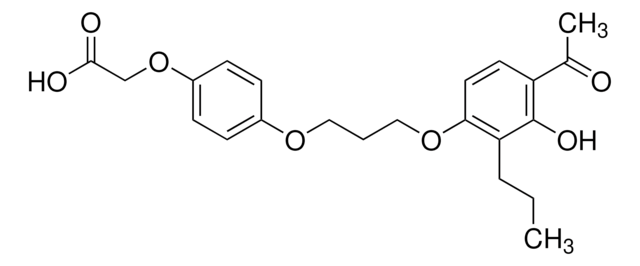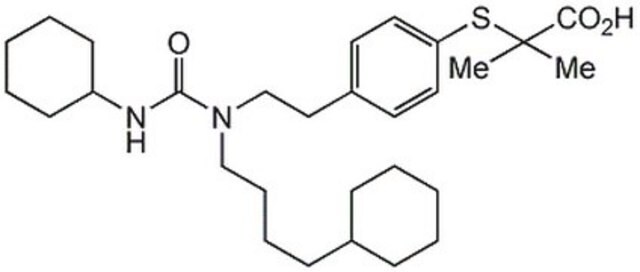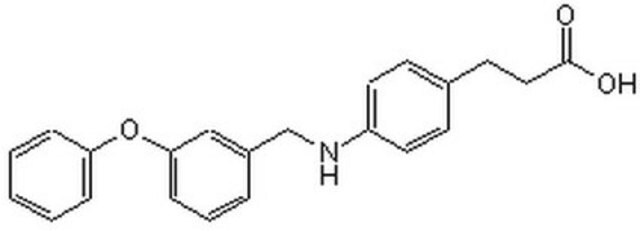422175
L-165,041
A cell-permeable phenoxyacetic acid derivative that acts as a potent and selective peroxisome proliferator activator receptor δ (PPARδ) agonist (Ki = 6 nM for hPPARδ and 730 nM for hPPARγ).
Synonym(s):
L-165,041, Compound P, L165041, 4-[3-(2-Propyl-3-hydroxy-4-acetyl)phenoxy]propyloxyphenoxy-acetic acid, PPAR Agonist VIII, PPARα Agonist III, PPARγ Agonist VII
About This Item
Recommended Products
Quality Level
assay
≥98% (HPLC)
form
solid
manufacturer/tradename
Calbiochem®
storage condition
OK to freeze
protect from light
color
white
solubility
1 M NaOH: 40 mg/mL
DMSO: 5 mg/mL
shipped in
ambient
storage temp.
2-8°C
InChI
1S/C22H26O7/c1-3-5-19-20(11-10-18(15(2)23)22(19)26)28-13-4-12-27-16-6-8-17(9-7-16)29-14-21(24)25/h6-11,26H,3-5,12-14H2,1-2H3,(H,24,25)
InChI key
HBBVCKCCQCQCTJ-UHFFFAOYSA-N
General description
Biochem/physiol Actions
Peroxisome proliferator activator receptor δ (PPAR@delta;)
Packaging
Warning
Reconstitution
Other Notes
Castrillo, A., et al. 2001. J. Biol. Chem.276, 34082.
Hansen, J.B., et al. 2001. J. Biol. Chem.276, 3175.
Son, C., et al. 2001. Endocrinology142, 4189.
Wilkie, N., et al. 2001. J. Neurochem.78, 1135.
Leibowitz, M.D., et al. 2000. FEBS Lett.473, 333.
Berger, J., et al. 1999. J. Biol. Chem.274, 6718.
Lim, H., et al. 1999. Genes Dev.13, 1561.
Legal Information
Storage Class
11 - Combustible Solids
wgk_germany
WGK 3
flash_point_f
Not applicable
flash_point_c
Not applicable
Certificates of Analysis (COA)
Search for Certificates of Analysis (COA) by entering the products Lot/Batch Number. Lot and Batch Numbers can be found on a product’s label following the words ‘Lot’ or ‘Batch’.
Already Own This Product?
Find documentation for the products that you have recently purchased in the Document Library.
Our team of scientists has experience in all areas of research including Life Science, Material Science, Chemical Synthesis, Chromatography, Analytical and many others.
Contact Technical Service
